We’re getting squirrelly at RWS this month as we feature one of Virginia’s most nimble and entertaining residents: the Eastern Gray Squirrel. 🐿*
* There is sadly no gray squirrel emoji (yet!), so we’ll settle for a chipmunk for now.
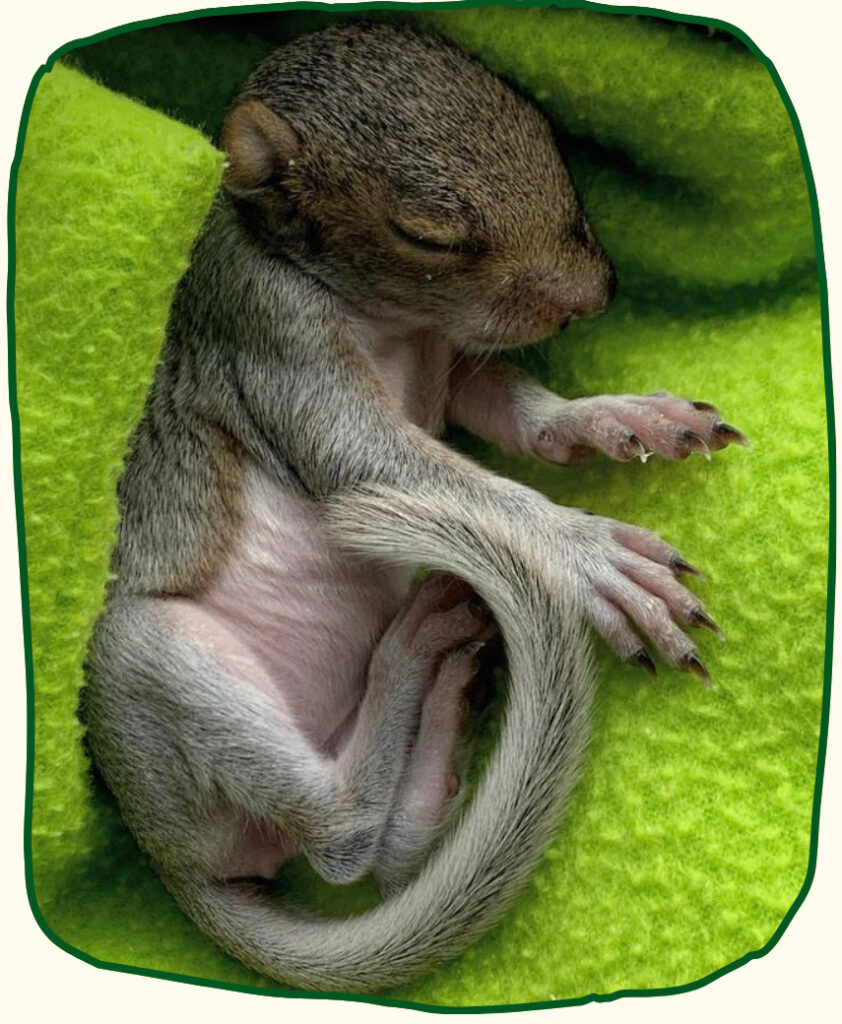
Eastern Gray Squirrels (Sciurus carolinensis) are tree squirrels and a common sight in our forests and cities – and in rehabilitative care! We treat over 150 orphaned eastern gray squirrels annually. The majority of these patients come into care when their nests are destroyed during tree work or storms. We also frequently intake babies that have been attacked by outdoor cats. When reuniting attempts fails, the next best option is professional care. (If you need a pick-me-up, check out this video of a reunion success!)
In fact, the end of July represents the start of baby season round two.🦉 Eastern Gray Squirrels are often our first orphaned wildlife patients of the season, trickling in at the end of February. Then, many squirrels will breed again in the mid-summer! We have already admitted three infant orphans this month, signaling the beginning of the upcoming squirrelly wave.
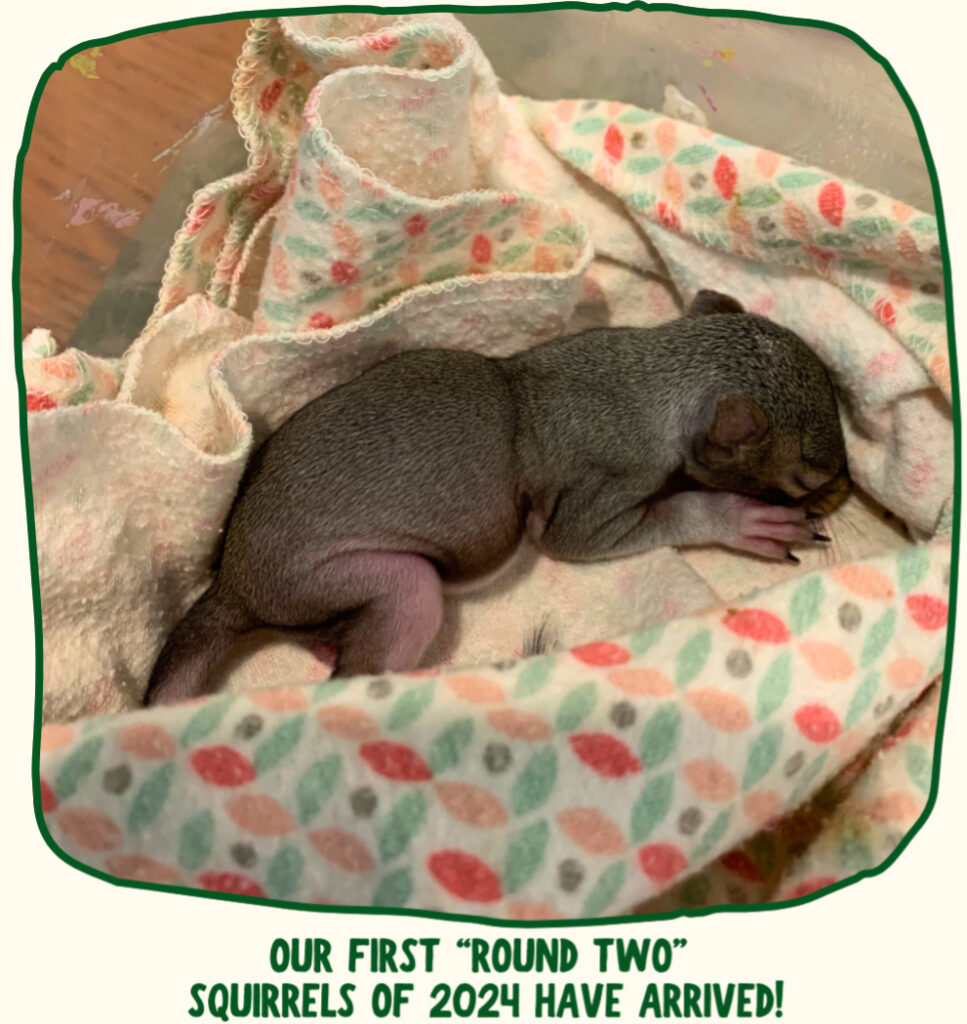
We’re often asked, “Why rehab squirrels? Aren’t there enough?!” Eastern Gray Squirrels are native to Virginia, and they are not “overpopulated.” In fact, those who think there are “too many squirrels” only have fellow humans to thank.
Believe it or not, squirrels were uncommon in urban landscapes and lived primarily in rural areas up into the mid-1800s. Seeking to beautify their cities and encourage cityslickers to appreciate animals more, officials in big cities like Philadelphia, Boston, New Haven, and New York intentionally introduced Eastern Gray Squirrels into city parks. Urban inhabitants enjoyed watching their squirrelly antics, and parkgoers were encouraged to feed them. In New York, squirrels even had security guards keeping them safe! Now common today, squirrels are often overlooked – yet are just as fascinating as any other wild neighbor here in Virginia.
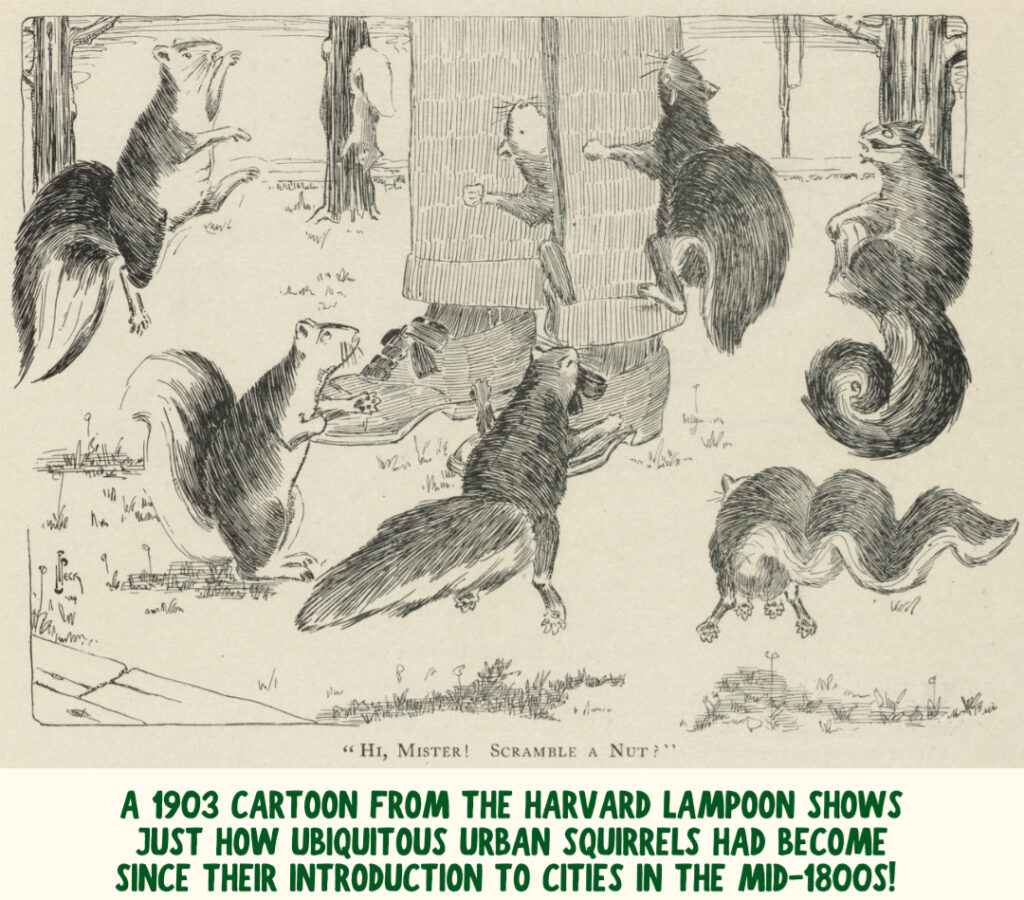
For starters, they serve as our ecosystem’s very own Master Gardeners. One of the very first facts many children learn about squirrels is that they bury and cache (store) nuts, later digging them up to eat during the wintertime. Studies have shown that squirrels are excellent at remembering where they have caches, sometimes even organizing nuts by type! (This is enviable. Don’t ask us how many times we’ve misplaced our keys or glasses this week.) While squirrels are successful at recovering most of their stored goodies, roughly 25% are left behind. What’s a buried, forgotten nut good at doing? Growing into a plant that will sustain many other creatures! 🌳
Squirrels are Master Naturalists, too. They not only will remember their caching sites, but they are able to identify tell which nut species will last longer vs. which seeds should be eaten sooner. They constantly monitor their caching sites, moving their food stores around as needed depending on weather and competition. Squirrels have even been observed displaying “tactical deception,” where they dig a hole and pretend to bury a seed that they keep in their mouth instead. This behavior was previously thought to only occur in primates. 😯
That said, it ain’t all nuts – Eastern Gray Squirrels are actually omnivorous! Though much of their diet consists of nuts, acorns, seeds, flowers, and bulbs from native species, squirrels also chow down on mushrooms, insects, small snakes, frogs, bird eggs, and other little critters. An opportunistic squirrel will happily munch on carrion (dead animals) as well. At RWS, our squirrel patients receive a similarly colorful diet – much of which we later find buried around their enclosures after we release them. Caching is a natural instinct, even for an orphaned squirrel, and we enjoy seeing them practice in rehabilitative care.
Eastern Gray Squirrels are born blind, hairless, and helpless inside of “dreys.” A drey is a nest built from leaves and sticks and lined inside with moss, fur, or soft pine needles. Females give birth after a pregnancy of just six weeks, welcoming a litter of two to six babies. Squirrel moms are crafty! She builds multiple dreys that she can move her babies between if she needs to. Mom provides care for the babies for 10 or more weeks, feeding them milk and eventually teaching them to forage. A baby squirrel has roughly a 25% chance of surviving its first year – but those that make it may live up to 6 years or so, and some squirrels in the wild have lived more than 12 years!
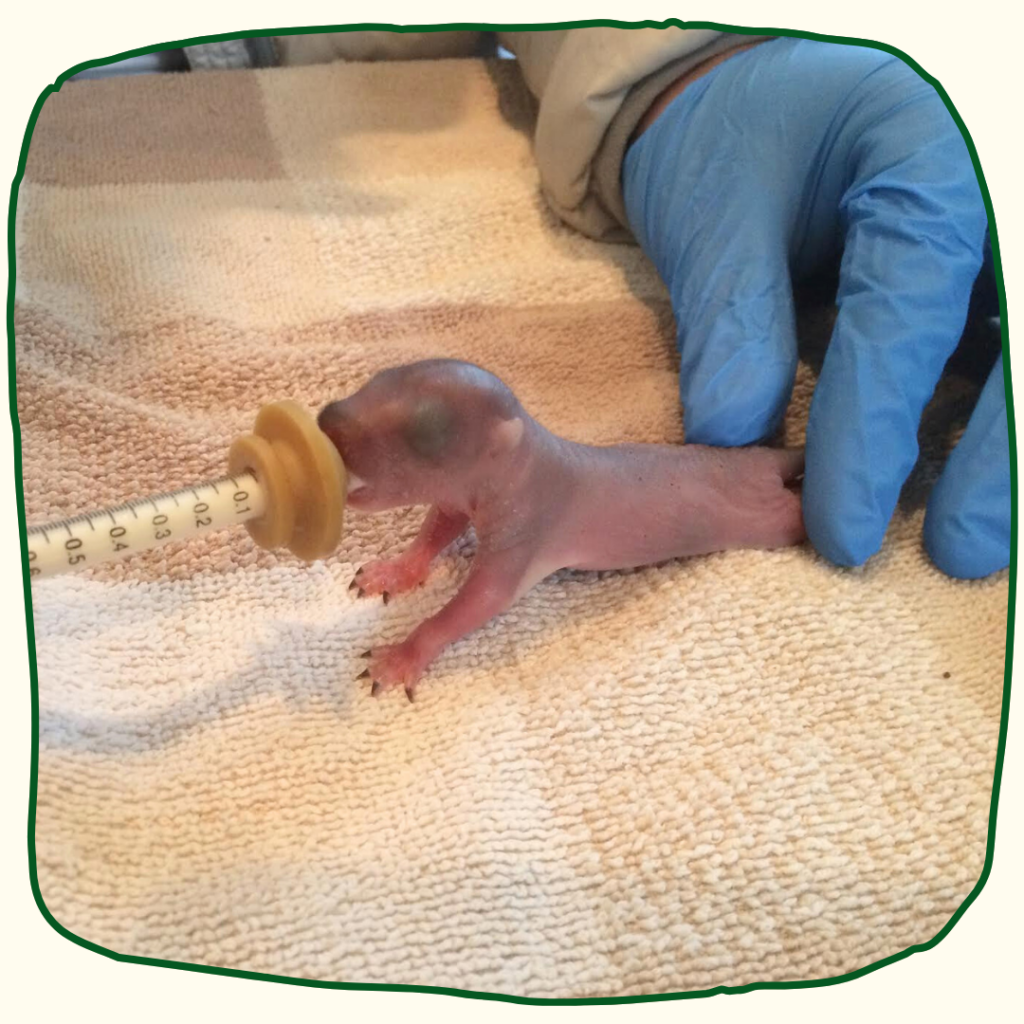
You might notice we’ve not mentioned the males when it comes to parenting. Only the female squirrel cares for their young, and often, the female will never mate with that same male again. Male squirrels will compete for female attention by running up and down trees, chattering their teeth while showing off their strength and speed. Perhaps we humans have more in common with squirrels than we thought. 🤣

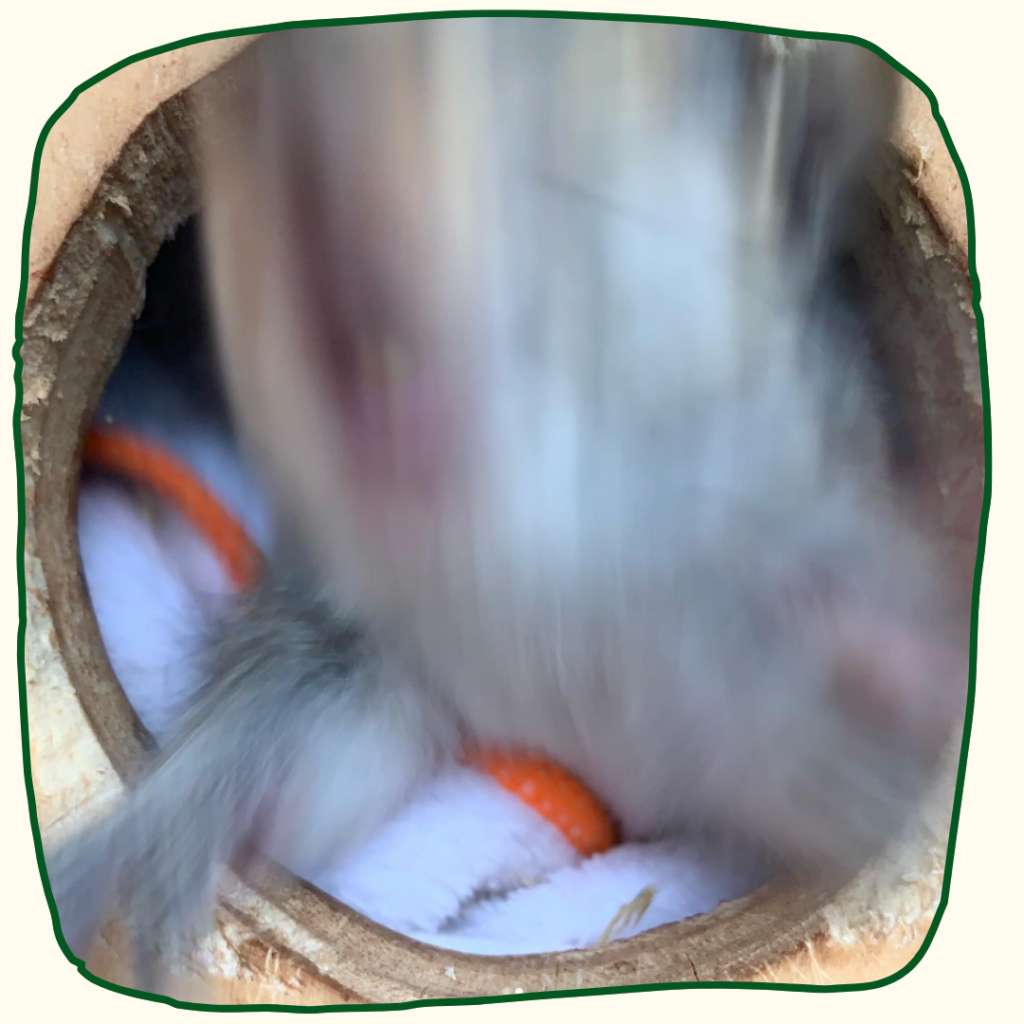
⬆️ Eastern Gray Squirrels become fearsome quickly in our outdoor enclosures! We got the memo to take a few steps back while doing a routine wellness check on this patient. 🤣
Eastern Gray Squirrels are relatively social into their adulthood, and youngsters gain much of their social learning through play! They enjoy chasing one another and play fighting by sparring, wrestling, or mounting one another. We enjoy seeing these skills develop in care at RWS amongst our orphaned squirrel patients, and we provide enrichment items to help encourage those skills. Particular favorites include fresh native tree clippings, new hidey holes, and food toys that they can interact with – and squabble over, as siblings do.
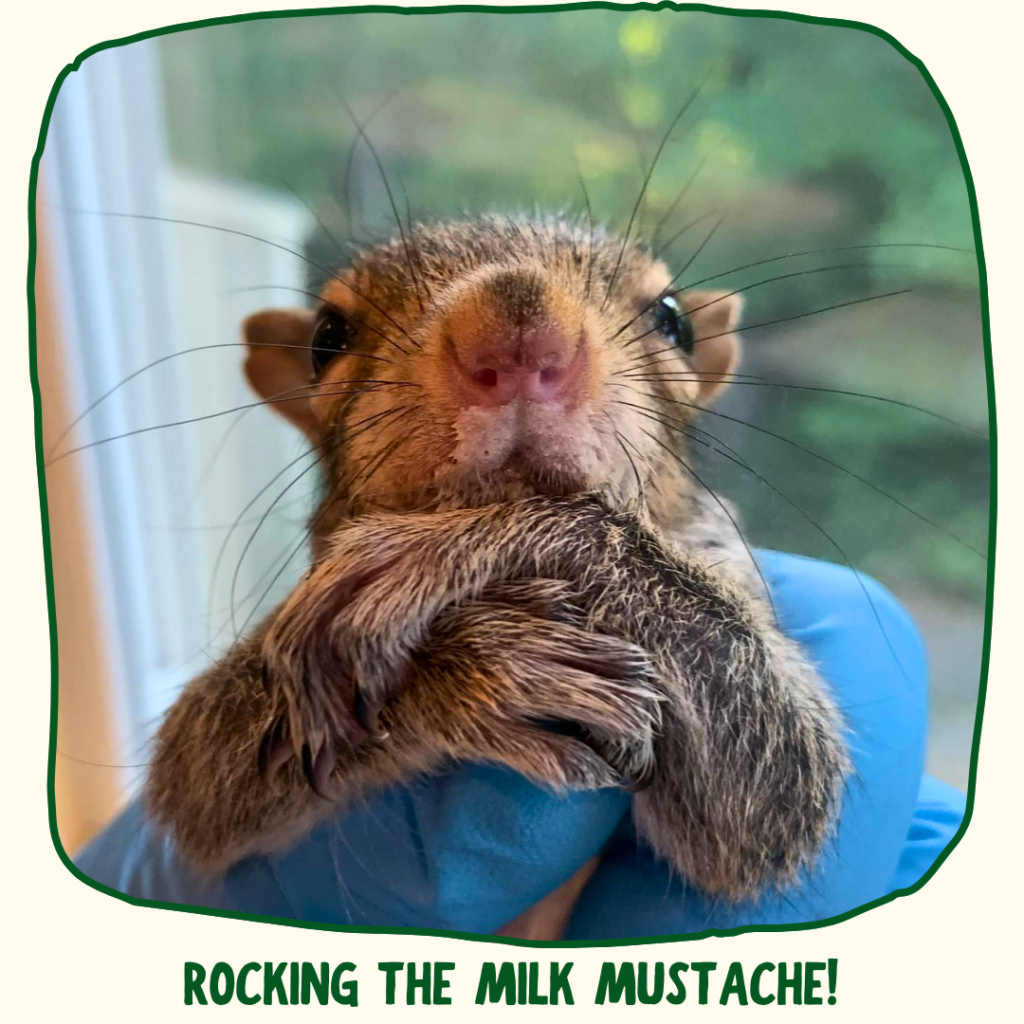
Whether aiding in reforestation and seed dispersal or charming onlookers with their antics, Eastern Gray Squirrels are creatures that truly reward those who take the time to appreciate them. 🌳🙌
July 31, 2024
Published:
Be the first to comment!